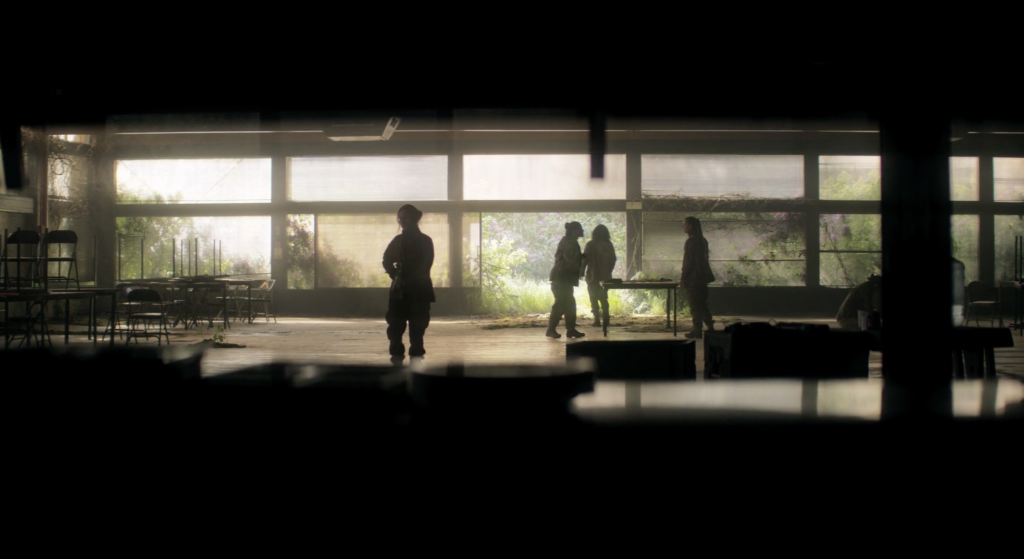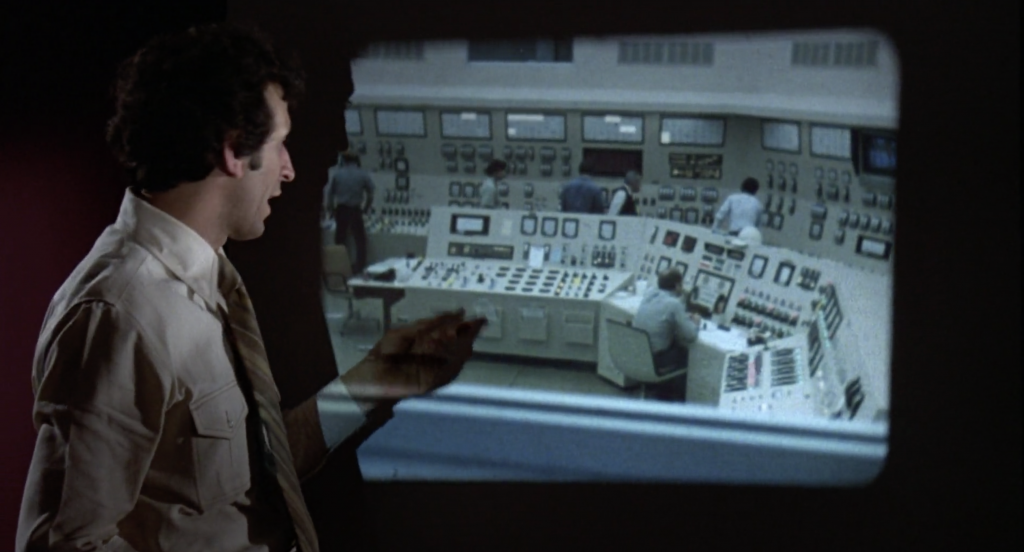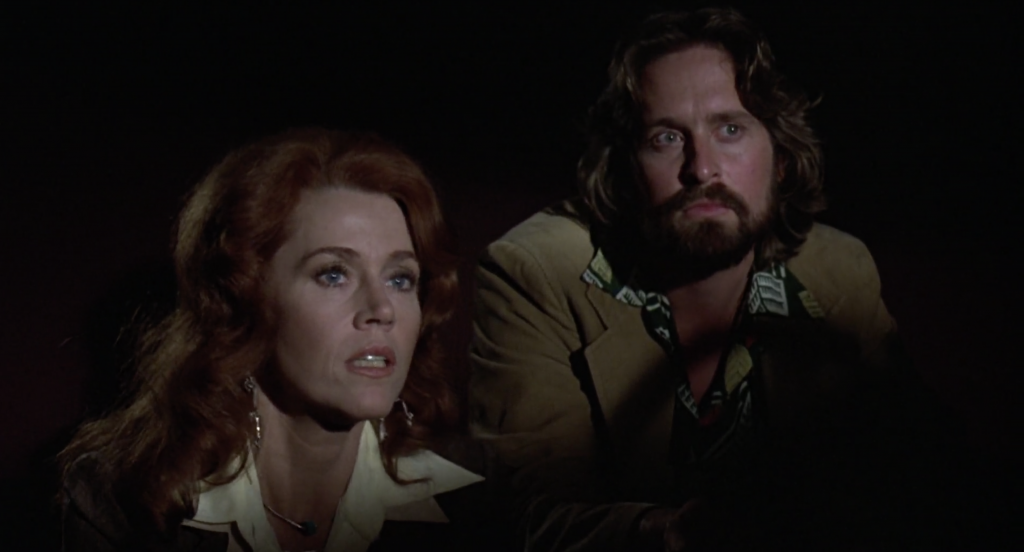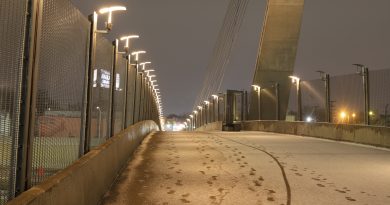American Meltdown: The Popular Imagination of Energy Disasters
This article is part of a series of articles partially adapted from my graduate thesis research.
Just in time for Earth Day! One of the guiding ideas of building a resilient power grid involves making a power grid that is more decentralized and less reliant upon what I call “monolithic generation infrastructure.” In plain English? Relying less on giant power plants and more on local, distributed solutions. There are two major reasons why these smaller solutions evade the popular imagination. One is that they are, well, sort of anti-monumental by definition. Small means not big means “not notable.” The second is that they’re usually out of sight and therefore off people’s radar entirely. Pipes, for example, are quite literally out of sight– because they’re underground.
The Small And Elusive
Other things– like giant power plants- are often far away from where most people live. Anna Clark refers to this issue in The Poisoned City. There’s no fanciful ribbon-cutting for fixing some water lines, so this kind of vital infrastructure renovation takes a backseat to politically sexier solutions. Along with my research on the technical “what,” I also wanted to look at the cultural “why,” which led me to look at how Americans understand– and fear- disasters, and how we can use this knowledge to inform better thinking on risk and infrastructure management moving forward. Turns out that when big things fail, they fail spectacularly. And, at least in terms of fictional portrayals in literature and cinema, we love to see it.

The Origins of Big
In my last article on this, I looked at the question of where centralization came from in the first place. While the push for centralized systems for power and utility began in fits and starts as the 17th and 18th centuries, momentum increased following the discovery of electricity. Gas street lighting necessitated distribution networks. Electric street lighting required, in turn, central power generation facilities. And central power generation facilities, then, allowed for broad development of streetcar networks and electrified railroads. Ecco! Modernity!
Centralization: Economy of Scale? Looming Disaster? Lil Bit of Both?
Interestingly, though, in spite of the early origins of these big systems, the imagination of monumental disaster seems to mostly be a 20th century phenomenon. There are a few things that we can trace this to that all happened around the same time. The Titanic disaster was arguably the O.G. disaster of the public imagination prior to the first World War. It was obviously on a completely different scale from the war that followed a couple of years later. But it was perhaps the first example we can find in modern history of the “too big to fail” (TBTF) paradigm.
The Titanic was both epic and disastrous, but also quite well-marketed, both before and after the disaster. Also, mind you, this was before the 24-hour media cycle. A representative of the White Star Line proclaimed, in one of the worst-aged statements in history, that the ship was unsinkable— even as it lay in pieces at the bottom of the North Atlantic. Like Trump’s phone call with the Secretary of State of Georgia, the Titanic was “perfect!” These kinds of things are notable because they are early examples of the interaction of mass public opinion or mass media– and the apparatuses of power and capital.
A couple years later, the first World War shocked the popular imagination with horrific imagery and stories. This was around the time that we got a new medium through which to communicate about great and terrible things.
Interestingly, we didn’t really come up with the “too big to fail” term itself until, as far as I can find, the 2008 financial crisis. The term itself was applied to giant investment banking conglomerates. In a profound illustration of the toxic duality here, it is unclear whether the term was ever meant to mean “too big to be allowed to fail, for fear of the disastrous effects that would result,” or “large enough that a failure is functionally impossible.”
Advent of the “Mass Ornament”
Film specifically enabled the mass distribution of impressive, shocking, fanciful, and evocative imagery. The term “Massenornament” was coined by Siegfried Kracauer, looking at the spectacle of cinema connecting with masses of people. This is especially valuable to consider in context of our instinctually appalling reaction to mass destruction.
And, unsurprisingly, apocalyptic films have actually been around, well, since film has been around. August Blom’s silent film as early as 1916 depicts the end of the world– by way of a comet. There are a lot of great shots of bougie Scandinavians in morning coats freaking out, plus some primitive special effects, if you’re interested in watching it. This would be echoed later in Abel Gance’s La fin du monde (1931), which has the same-ish basic plot. Fritz Lang’s epic Metropolis (1927) is still impressive, nearly a century later, in depicting the catastrophic destruction of a futuristic city powered by monumental and fantastical machinery. (It’s also super lefty and appealed to both the Nazis and to commies of the day– the Nazis were attracted to the monumental depictions of power, and the lefties were attracted to the portrayals of the workers being treated as disposable cogs in the machine of Moloch).
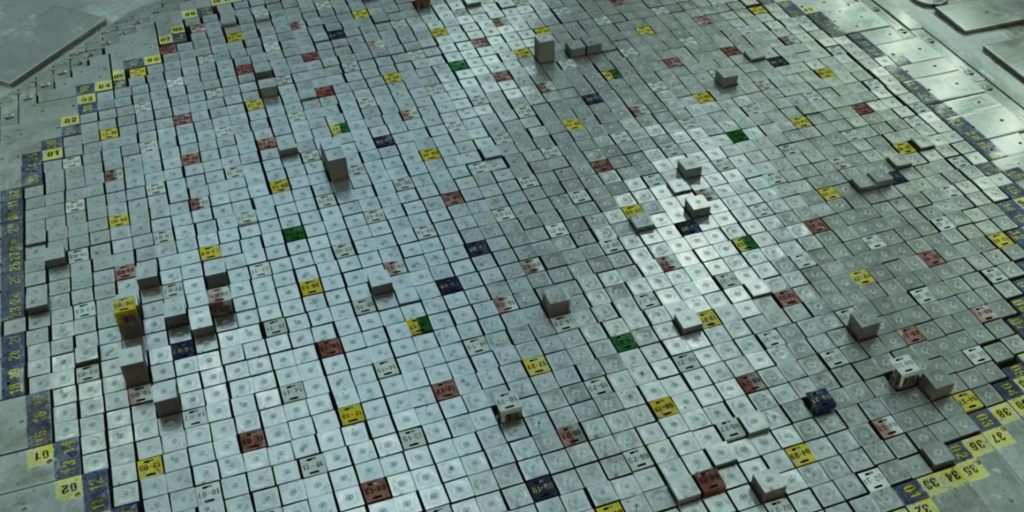
The “Decided Grimness” of mass destruction
Susan Sontag, in her acclaimed 1965 essay on the imagination of disaster, refers to the “essentially innocent relation” older films maintain with the threat of destruction. We definitely see this in the August Blom (1916). A decade later, Fritz Lang’s Metropolis was made after the genre had properly come of age– during the colorful tumult of Weimar Germany. Metropolis is fully aware of its social themes and prominently Marxist undercurrents. But the highly theatrical nature of silent film in particular– the exaggerated facial expressions and makeup, for example, or the famously choreographed scene of the workers manning the Heart Machine.
Interestingly, we didn’t really come up with the “too big to fail” term itself until the 2008 financial crisis, applied to investment banks. In a profound illustration of the toxic duality here, it is unclear whether the term was ever meant to mean “too big to be allowed to fail, for fear of the disastrous effects that would result,” or “large enough that a failure is functionally impossible.”
This appeals more to the human interest in the dramatic than does the film to the fear of destruction. This more innocent relationship, Sontag notes, changes in the latter half of the 20th century as technology becomes more advanced in production techniques. Films also advanced in their “decided grimness” during an era when the American popular imagination was increasingly obsessed with Cold War themes of annihilation.

Mass Destruction in the Atomic Age
Beyond the improvements in film technology, the cinematic obsession with nuclear disaster specifically seems to be a product of two things. First, the monumental destruction wreaked by the second World War involved atomic destruction, in no small part. This is perhaps first chronicled in the 1959 On The Beach, in which, well, the world ends with nuclear disaster. On The Beach features a particularly bleak, anti-war tone. But the tone belongs to an earlier, more innocent era than, say, the Vietnam era counterculture films.
Even more separated are the grittier, blood-and-guts antiwar sentiments that would define Vietnam war films like Deer Hunter (1978) or Full Metal Jacket (1987). These eschew mass destruction in favor of a more harrowing dive into individual and collective psychology and trauma.
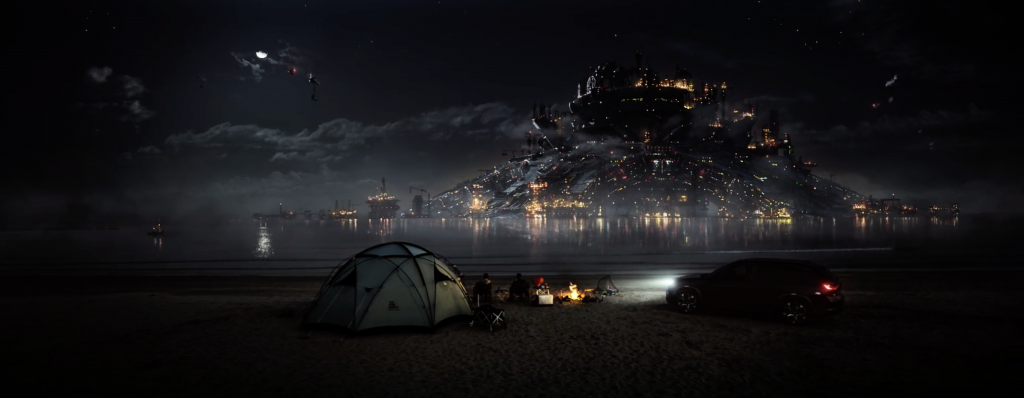
Destruction In War Or In Peace
As the Cold War wore on, the public also became both acquainted with real-life nuclear disasters that had nothing to do with intercontinental ballistic missiles or rogue nations, and fascinated with fictional ones. Civilian nuclear power, and is associated disasters, began to proliferate in the US and Canada beginning in 1958 and continuing into the 1970’s. The Eisenhower Administration specifically presided over a lively debate over whether nuclear power should remain in nuclear hands, and the question of private-sector, profit-seeking involvement in such a sensitive technology as the Cold War was kicking into high gear was quite controversial. Atoms For Peace, for example, helped create an imagination of the atomic age as we know it. The atomic aesthetic fancifully echoes throughout Bethesda’s Fallout video game series. (There was even a Soviet counterpart of this, Атом Мирный).
The nuclear-but-not-warfare genre might well be its own separate genre altogether. The real-life, partial meltdown of Three Mile Island in 1979 followed on the heels of the film The China Syndrome, released just twelve days before the accident. The Jack Lemmon, Jane Fonda, and Michael Douglas film chronicles the looming threat of a nuclear disaster from a fatally-flawed design. It takes place in California. One of the story arcs in the sprawling novel Cloud Atlas— and its critically-divided, 2011 film adaptation- involves a nuclear power plant designed by a nefarious oilman who seeks to cause a disaster to undermine the viability of the technology. Guess where? Well, also California, duh.
California as the Fulcrum of American Cinematic Disaster
California specifically gives us an interesting perspective because of its fanciful place in the American canon. Mike Davis has looked at this question in Ecology of Fear. Don DeLillo even mocks it in the classic, 1984 White Noise, when he posits that “California invented life-style. This alone warrants their doom.” Kevin Starr writes about SoCal “on the edge”– of tomorrow, or, perhaps, of destruction. These all show how we’re attracted to the monumental because of the threat, even without the actual delivery, of mass destruction.
Said longtime co-conspirator and occasional Handbuilt illustrator (also the author’s cousin), New York-based media critic Jenna Ipcar, of this seemingly uniquely American fascination:
Hollywood has historically focused on selling its audience spectacle and, most importantly, fantasy: The perfect romance, the upstanding hero, the greatest human triumph. It’s selling an aspirational lifestyle, but one specifically bundled with moral guidelines. So, even when that same system actively undermines itself– portraying, say, a tragic romance, a questionable anti-hero, or telling about a triumph of evil- it has a sort of reverse psychological effect. It’s a fantastical indulgence in the ‘bad,’ we the audience know this is ‘only a movie’ and therefore a safe way to observe what could happen, while still informing us on how we should or shouldn’t act during any given scenario. It plays to two things humans can’t get enough of: rubbernecking, and a low standard we can smugly compare ourselves to (“I would NEVER run into that haunted house!”).
Or, she added wryly, “perhaps its just as simple as California being an earthquake prone state and the majority of filmmakers living with that anxiety in the back of their minds.”
Chernobyl Power Plant as Peak TBTF
The Chernobyl disaster of 1986 is perhaps the best-known nuclear disaster in the popular imagination. It’s also one of the better examples of the too-big-to-fail paradigm. And, well, how “too big to fail” can indeed fail spectacularly. HBO chronicled the event in a 2019 miniseries that is, as my dear friend, film critic and rockstar Handbuilt Patreon contributor Tim Swaddling put it, basically real-life horror.
Just as the Titanic was built on the TBTF hubris of transportation capitalism, Chernobyl was borne of a toxic combination of Soviet authoritarian pride and the hubris of engineers who believe in the indisputable virtue of their creation. The RBMK reactor design was an engineering feat. Developed in the 1960’s, it was simpler to build than existing pressurized water reactors. It kind of inverts the traditional reactor design, piping water through individual fuel rod channels– instead of the fuel rods themselves situated inside a pressurized water vessel. This resulted in the end product being, well, quite gigantic indeed. The førbidden chønk, if you will. (Indeed, the newer MKER– for Многопетлевой Канальный Энергетический Реактор, “multi-loop pressure tube reactor”- is about 1/4 the size.) The reactor could also use unenriched uranium, which was cheaper.
Design tradeoffs in ginormous machinery
The problem here was that the relative simplicity of design had some nasty tradeoffs. Once running, the system was gigantic and complex, requiring careful attention to manage the high void coefficients of the reactor. The void coefficient is essentially a feedback loop in which feedwater gets heat into steam, and the steam increases the reaction rate, requiring constant rebalancing to avoid catastrophe. Other types of nuclear reactors avoid this problem by using different neutron moderators or through better management of feedwater. Improvements to other RBMK reactors after the accident would later address this issue by using enriched uranium and employing more passive safety features.
A solar panel falling off a roof is not the same thing as a massive nuclear meltdown that renders a double-digit percentage of your country’s land uninhabitable for decades.
(I’m mentioning these technical asides because we often simply ascribe catastrophe to some sort of hubris, where we should instead be exhaustively studying what went wrong at a technical level in order to prevent such a catastrophe from occurring again. This makes the case for distributed power generation, decentralized systems, resilient systems, and redundant systems, whether we’re talking about cloud computing, corporate organization, or power grids).
Bigger Is Better, Until Everything Falls Apart
Bigger is always better, right? I mean, if you ask engineers, yes, generally. More lanes on the highways, more gigawatts in the reactor core. The Chernobyl accident specifically involved a combination of a fatal design flaw and careless actions by operators. This also happened in the middle of the night, which is always a really bad time to do things that require a lot of precision and attention to detail. A test– ironically to see whether the reactor could sufficiently power its cooling systems in a shutdown event, went terribly wrong. The reactor could not sufficiently power its cooling systems, and the diesel generators required to maintain sufficient feedwater took too long to spin up to speed. Consequently, the reactor blew up, highlighting how over 36 seconds, an ostensibly stable system failed catastrophically.
The resulting disaster was arguably the watershed moment in nuclear power. It was also especially emblematic of a Soviet Union that had overextended its draconian apparatus of state control without the ability to always responsibly manage its enormous empire.
Support!
Chernobyl and the The Hinterland of Disaster
The mythos of Chernobyl also catapulted into the popular imagination a broad and enduring trope, even if it didn’t itself create this trope, and that’s the trope of the mythological hinterland of disaster. Following Chernobyl, the Soviet government evacuated the nearby cities including the nearest city of Pripyat, before setting up a massive “exclusion zone” around the surrounding towns that remains to this day. You can visit some parts of it– and there are even some residents left.
As mentioned, Chernobyl didn’t “invent” this trope. Andrei Tarkovsky made a film that is, well, sort of about this very thing, just a few years prior. But the trope endures through things well beyond Chernobyl-adjacent fiction. Jeff Vandermeer’s Southern Reach trilogy (2014), for example, similarly deals with a sort of ethereal hinterland of the same name that is magically walled off from the rest of the world, set, we imagine, near a military base on the Gulf Coast. The novel deals with both high science fiction tropes– distortions of space-time, evolutionary biology, and government conspiracies- as well as with postmodern questions of metanarrative (I won’t spoil it, but the characters mess with their own, each other’s, and the reader’s heads).
While Vandermeer, an avid birder and naturalist, is primarily interested in the infinitely mutable nature of biology in the course of evolution and biological interaction, the same themes are present here as in the 1971 novel Roadside Picnic, which at least partially inspired Stalker (1979).
Classy vs. Pulp Apocalypse
Separate from nuclear war, nuclear military disasters, alien invasions, or mythological hinterlands, there are, of course, plenty of less illustrious examples within what we might call the non-warfare-nuclear or para-warfare genres. Take the critically not-acclaimed, made-for-TV films Thrill Seekers or Atomic Train (both 1999). A minor component of Thrill Seekers‘ generally nonexistent plot also involves a nuclear power disaster in Southern California. And Atomic Train, well, you can probably guess what happens in that. Remember Samuel L. Jackson’s quote about the snakes on the plane in the eponymous film? Well, it’s kind of like that. Except with a nuclear bomb, not snakes, on a train, and not on a plane. Also, Rob Lowe. Wild to think that Sam Seaborn was moonlighting in such an unfortunate side hustle. Who thought this was a good idea? And why? We demand answers.
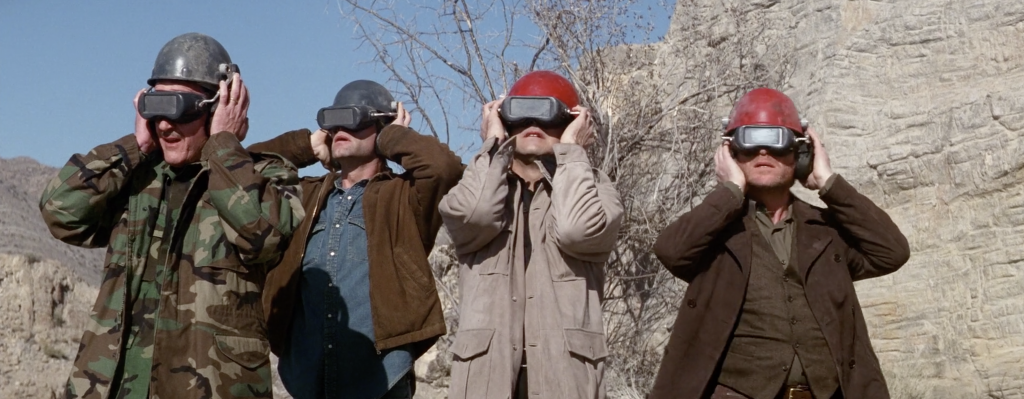
The Anti-Monumentalism of Small-Scale Disaster
Finally, we get to the question of small-scale disaster, and why this just isn’t sexy for the purposes of most monumental cinema or other fiction. I think there’s a Stalin quote about this? The fictionalized death of an individual is a tragedy, but the fictionalized death of millions is great cinema? Something like that.
Air travel? Super safe, but you wouldn’t know it. They don’t make movies about the 40,000 people killed each year in cars. Traffic deaths are but a statistic. Same with gun deaths, one might suppose. Rather, they make movies like Airport (1970– written by a guy who incidentally also wrote a book about a fictionalized drama of high conspiracy in Detroit’s automotive industry), Passenger 57 (1992, with Wesley Snipes, of course), Con Air (1997), Flight Plan (2005, Jodie Foster on the then-new, double-decker A380). Or, perhaps less illustriously, Snakes on a Plane (2006), mentioned before. These are all, by and large, action movies and psychological thrillers, where the suspense is the driver rather than the threat of disaster.
The Lack Of A Wind Turbine Disaster Movie Genre
We don’t, for the most part, make movies that involve wind turbines falling down. After all, if a wind turbine blade falls down in the middle of the field, does it make a sound? Maybe. Hell, it might even kill someone. Here’s a zinger for you. Wind power is actually far more lethal than nuclear power. Observed James Conca in Forbes:
In England, there were 163 wind turbine accidents that killed 14 people in 2011. Wind produced about 15 billion kWhrs that year, so using a capacity factor of 25%, that translates to about 1,000 deaths per trillion kWhrs produced (the world produces 15 trillion kWhrs per year from all sources). By contrast, in 2011 coal produced about 180 billion kWhrs in England with about 3,000 related deaths. Nuclear energy produced over 90 billion kWhrs in England with no deaths. In that same year, America produced about 800 billion kWhrs from nuclear with no deaths.
So, maybe a wind turbine falls and crushes some poor soul to death. But one thing’s for sure: this certainly doesn’t make a blockbuster. Chernobyl inspired millions of dollars in film and video game production across multiple continents. No one has ever heard of a movie about wind turbines falling down, or engineers falling off wind turbines. I don’t think a film has ever been made about the Sayano-Shushenskaya power station disaster in 2009. But that was also a smaller-scale disaster that still killed quite a few people. There’s no exhaustive list because there are, sadly, manmade disasters that occur all the time, and this is a huge calculation we should be considering in how we built power grids and the rest of the built environment.
Distributed Solutions As Not-Disastrous and Not-Interesting
We don’t, generally, think of these distributed power solutions as potentially disastrous.
That is, of course, unless you listen to Sean Hannity or Tucker Carlson. Texas Governor Greg Abbott railed against how horrible wind power was in the aftermath of the February 2021 storms, for example. Sean or Tucker, one– can’t remember which and the distinction isn’t important- railed against how wind turbines were fashion accessories and not real sources of power generation. (You know, renowned renewable energy expert Sean Hannity, who doesn’t even have a college degree but is somehow qualified to talk about a bunch of super technical things? Fox News is wild.)
Exclusions from the Popular Imagination
There are other exclusions that are worth mentioning. The Banqiao Dam Disaster of 1975 (河南“75·8”水库溃坝), for example, was probably the worst manmade disaster in history. 62 dams collapsed and tens if not hundreds of thousands of people died. But it also occurred in China, meaning that not only was news of it highly unlikely to make its way into American mass media by way of then-relatively-closed Chinese society, it was also probably one of those things that Happened Over There And So Why Should We Care.
The 2003 Bam earthquake in Iran killed tens of thousands and handily made headlines in a United States that had overnight developed a hitherto relatively nonexistent knowledge of Central Asian geography after the Bush Administration invaded not one but two countries in the pursuit of nonexistent weapons of mass destruction and alleged terrorists that had nothing to do with the September 11 attacks. Bam was very different from Banqiao in this sense, even though China and Iran both lack much in the way of a free press– Banqiao took place in largely rural areas during a time of thawing but still frigid US-China relations. But it definitely took place in One Of Those Countries We’re Supposed To Not Be Pals With Because They’re Communist Or Something.
In other words, while there’s definitely a degree to which limited information flow explicitly excluded these events from the popular American imagination, there’s also a pretty serious melange of Orientalism and racism here that is probably also a huge factor.
Beyond The TBTF Paradigm
Some academics have argued that, in big, complicated systems, well, stuff simply goes wrong. Big systems are complicated. And complicated stuff breaks! Such is the idea behind the idea of Normal Accidents. So, the solution should be to create fewer opportunities for accidents! A solar panel falling off a roof is not the same thing as a massive nuclear meltdown that renders a double-digit percentage of your country’s land uninhabitable for decades. As the SISE haiku goes, a major wind spill / at the offshore farm today / caused no injuries.
As I mentioned before, there are definitely some benefits of centralization. But so, too, are there many drawbacks. The drawbacks increasingly outweigh the benefits of economies of scale as we face down threats like climate change. As I illustrate here, there are so many things that can go wrong with centralized systems that– while we love to see it in the popular canon and it makes for great cinema- it’s not a great value proposition for a sustainable and resilient future.
Small is, at least in the future of utilities and power, the new big. We just will have to figure out some other way to get our kicks in thrillers and disaster movies.
This article was partially adapted from research I did as part of my graduate thesis. Articles in that series can be found here. Remember to support independent journalism!



